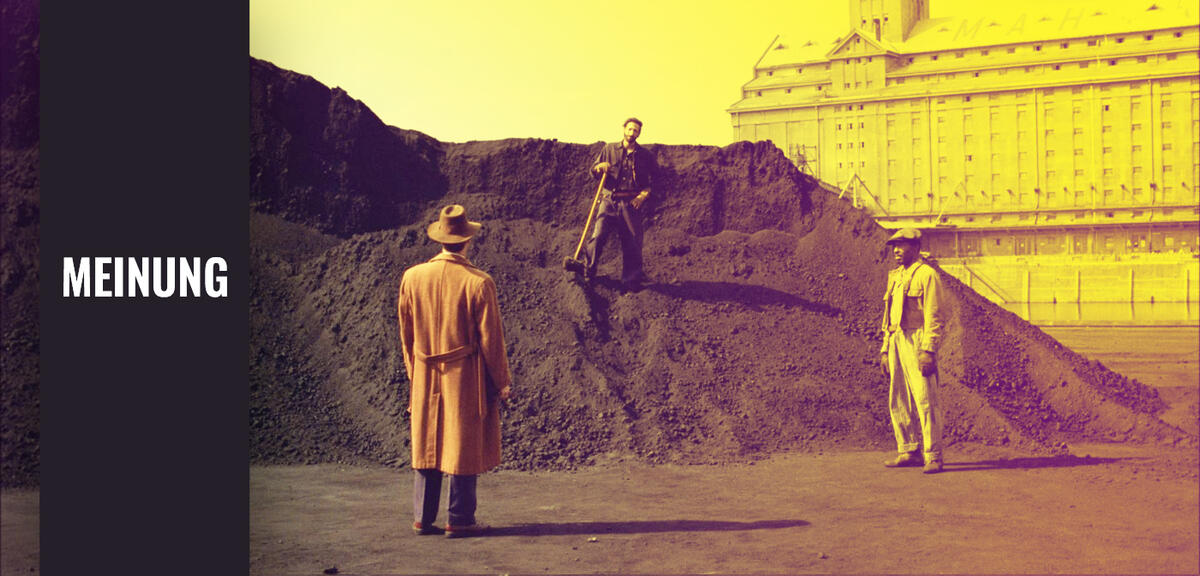Adrien Brody falls for Guy Pierce’s money in the epic The Brutalist, which tells of the perfidious traps of the American dream over 30 years. A must-see.
26 rolls of 70mm film weighing around 150 kilograms were shipped to Venice for the world premiere of The Brutalist. The film has a running time of 215 minutes, minus a quarter of an hour intermission that splits it into two chapters. The Brutalist is a massive American novel in film form, an epic that explores an entire era.
At this year’s Venice Film Festival, the new film by Brady Corbet (Vox Lux) marks the first milestone in the competition. It invites you to rub up against it, work your way through it and take a stand. “What do you think of The Brutalist?” may not be standard for flirtations over espresso and Aperol, but it should be. A movie like this – with all its strengths and weaknesses – is not released every day.
The Brutalist begins with a rebirth after the Second World War
After Oppenheimer, this time we have a fictional biography with a monumental visual format and an equal length. Corbet uses its nature (the 1950s VistaVision format) and its material (film) like the architect of a brutalist building uses its bare concrete walls and clear lines.
The Brutalist opens with a flickering in the dark, it feels like a birth – or a resurrection from the dead. László Tóth (Adrien Brody) digs his way through the belly of a ship into the blinding daylight. A golden torch slithers through the frame. The Statue of Liberty welcomes the Hungarian Jew to the United States of America in 1947. László has escaped the Holocaust in Europe. Now he wants to start a new life in Philadelphia.
While he waits to be reunited with his lost wife Erzsébet (Felicity Jones), he ekes out a living in the city of brotherly love in his cousin Attila’s (Alessandro Nivola) furniture store. He is given the task of redesigning the library of entrepreneur Harrison Van Buren (Guy Pearce). It is to be a birthday surprise for the spoiled son (Joe Alwyn) for his father. A welcome challenge for László, as he was a celebrated architect in his home country. The bond between artist and patron is knotted, or should we say: the chains
The comparisons to The Godfather and There Will Be Blood are not quite right
In the initial reactions from Venice, this story has drawn comparisons to There Will Be Blood to The Godfather, which I can certainly understand. The screenplay by Brady Corbet and Mona Fastvold is set in the same era as the Godfather films, while the duo of characters conjure up memories of Daniel Plainview and Eli Sunday. Van Buren is sketched as a self-made man. He places his monument on a huge green hill behind his villa. He builds his own “City upon a Hill”, to use the biblical image that has been used for decades to describe the USA’s sense of mission
Adrien Brody’s László Tóth, on the other hand, has been robbed of his foundations and injects drugs to relieve himself. He is one of the people mentioned on the pedestal of the Statue of Liberty: “Send them to me, the homeless, the storm-tossed …” And just like in The Godfather or There Will Be Blood, he will learn how much goodness American capitalism has in store.
The Brutalist feels different from the pastoral epics of Coppola and Anderson, however. Especially in the first half, the film buzzes with an esprit and improvisational spirit that I would rather place in independent cinema or European arthouse. When László climbs on a harbor crane far above the coal dust-smeared ground during one of his jobs, you can literally smell the freedom. It’s more Martin Eden than Michael Corleone. This makes the film seem frayed at times, but always fresh. In fact, the 200 intermissionless minutes trickle through the projector faster than you would expect with this subject or this director.
Guy Pearce provides the biggest laughs and scares
Former actor and current director Brady Corbet told his first two films, The Childhood of a Leader and Vox Lux, with an overly serious auteur gesture. As if his time with Haneke on the set of Funny Games U.S. had rubbed off. The Brutalist is more permeable.
Adrien Brody’s natural acting loosens up the whole movie, he takes you by the hand, so to speak, and sweeps you across the Atlantic to Philadelphia in one go. But the biggest laughs and scares belong to the fantastic Guy Pearce as Van Buren. He adorns himself with culture and beauty, but moves through the scenery as stiffly as if he has to put on a human suit in the morning so that no one can see his true face.
It’s not until the second chapter that The Brutalist falters slightly, as Felicity Jones’ casting is either one big joke that someone needs to explain to me, or a sad miscast. She plays Erzsébet, scarred by persecution and post-war odyssey, about as naturally as Rami Malek plays Freddie Mercury. But you can overlook that. The Brutalist approaches the bulk of its daunting demands without breaking under the weight.

